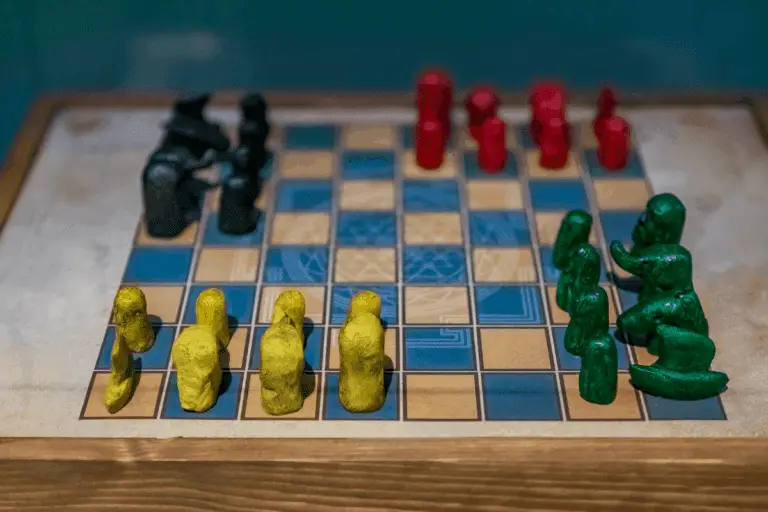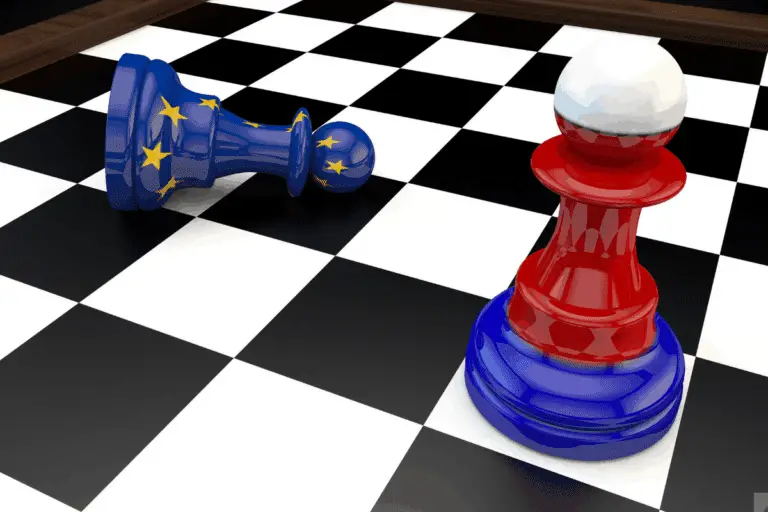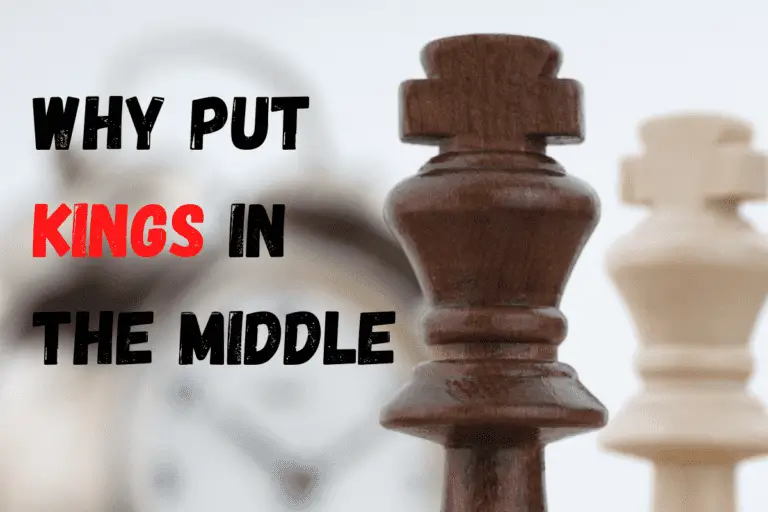What Wood is Used for Chess Boards
⭐⭐⭐ Take 7 minutes to read and improve your chess game ➡️ : This article was first published on, and is Copyright of Chessquestions.com
Chess sets are often made from wood and the boards can be quite outstandingly beautiful looking, but have you ever considered the variety of wood being used to make chess boards and why? Well, I guess you have because you are reading this post, so let’s find out.
There are more than 20 suitable woods for chess boards including Ebony, Rosewood, Redwood, and Palisander for dark squares of a chessboard whilst lighter varieties like Erable, Maple, Beech and Birch are ideal for the contrasting light squares.
Whether you are looking to choose common wood to make your own board or something that will look great with your chessmen, this article is jammed packed with info that can help you decide on which woods you want to be included and have the perfect square contrasts.
Just to get things off the ground, this is an excellent DIY chess board using Walnut (Dark) and Ash for the light square for a homemade chess board project.
21 Woods That Are great for Chess Boards
The table below includes some endangerment notes too, although in cases, this may only refer to specific geographical areas. For more information on the endangered status of specific woods, check out the restricted wood database. And where possible, support the effort to save endangered species.
| Wood | Shade/Suitability | Endangerment |
|---|---|---|
| Walnut | Dark | Avoid African and Peruvian |
| Wenge | Very dark | Endangered |
| Ebony | Very Dark | Vulnerable & Endangered |
| Rosewood | Dark | Several Vulnerable Varieties |
| Palisander | Dark | None |
| Redwood | Medium Dark | Several Vulnerable Varieties |
| Sandalwood | Medium Dark | None |
| Macassar | Dark | Ebony derivative Vulnerable |
| Elm Root | Medium Dark | None |
| Briar | Medium/Both | None |
| Mahogony | Medium/Both | Cuban is Endangered |
| Sycamore | Medium/Both | None |
| Erable | Light | None |
| Maple | Very Light | None |
| Whitewood | Very Light | None |
| Beech | Very Light | None |
| Birch | Very Light | None |
| Hornbeam | Very Light | None |
| Aspen | Very Light | None |
| Ash | Medium/Light | None |
| Sheesham | Medium/Both | Some Vulnerability |
My favourite dark and light wood combination for a chess board.
Walnut and Ash make a beautiful contrast of colored squares for a chess board. The grain of the ash can be enhanced for the light squares and the natural color contours of walnut provide a stark and rich contrast, providing a look of real quality.
1. Walnut – Dark
Goes well with – Ash, Maple, Sycamore
Walnut wood is one of the most popular woods used for chess boards and has a beautiful finish. It has a beautiful grain pattern With receptive staining qualities Walnut heartwood will polish well and have a wonderful finish
2. Wenge – Dark
Goes well with – Maple
Wenge is one of my personal favorites because when you combine wenge (dark) with Maple (light), they make a spectacular contrast in shades! Wenge also comes close to other popular chess board manufacturers options like rosewood and ebony which are both darker than walnut so if you’re looking for something different, this might just fit the bill.
3. Ebony – Dark
Goes well with – Maple
Ebony woods are typically used as the dark wood for a chessboard. Ebony is one of few kinds of wood that show no natural grain and can be well sanded to produce an exceptional finish, making it perfect for everything from musical instruments like violins or guitars to carvings such as sculptures but of course also perfect for the dark squares of a chessboard matched with Maple to give a real black and white square view.
4. Rosewood – Dark
Goes well with – Ebony
Rosewood is an excellent choice and is available in a range of options including ‘bud’ and ‘golden’. It is rated as a ‘hard’ wood and is naturally resistant to splitting. It has an attractive dark red color with lighter grain markings, giving it good contrast. The texture of the wood can be matte or glossy (with some rubbing) depending on how much sanding was done before finishing. For a really classy look, combine with Ebony
5. Palisander – Dark
Goes well with – Erable
Palisander wood is most often used for the dark squares, while light wood of another variety is used as the darker, Erable works well with a reddish palisander. The color contrast between dark and light on a chess board can be striking when using this type of wood combination.
Palisander comes from Brazil, and features a beautiful reddish-brown hue with an appearance that closely resembles rosewood or mahogany.
6. Redwood – Dark
Goes well with – Aspen
The majestic redwood tree, found in California and Oregon’s coastal regions of the US, is the tallest living tree species on Earth. Redwood trees are recognizable for their deep red hue and abundant bowls that they produce when they’re stressed or damaged by fire.
7. Sandalwood – Dark
Goes well with – Whitewood
Sandalwood is another that is used primarily for dark squares on a chessboard. This tree is native to India, but has also been cultivated in the western hemisphere. It’s identifiable by its strong fragrance and a pleasant aroma. Coupled with Whitewood, you’ll get a stark contrast between squares.
8. Macassar – Dark
Goes well with – Any light wood option
Macassar is probably the least well-known of all the woods on this list and type of ebony. It’s a type of tropical hardwood typically found in Indonesia and looks amazing with a glossy finish. What makes it great for dark squares is its mahogany-like appearance, but with a more robust and oily texture than other types of wood used for chess boards like teak or oak. It will glue better than teak and will not provide the dry appearance that oak often can.
9. Elm Root – Dark
Goes well with – Maple
The root wood of the Elm tree can be one of the most beautiful dark woods to b used in the making of chess boards. It is most commonly found in the eastern US. The wood is very hard and has a rich, deep appearance that can be beautifully matched with lighter woods like maple or walnut to create dark/light combinations for chess boards.
Now moving onto woods that can be used either as dark or light woods by a manufacturer, if using contrasting pieces from either end of the shade spectrum.
10. Briar – both
Briar wood can be used for either dark or light squares and is found in Europe and America. It is a hard wood that usually has various large knots to give it character for boards with light squares, but can also be found as smooth dark woods for the dar ones.
11. Mahogony – Both
Mahogony is a very popular wood for furniture but in the chess world it can be used for both dark and light pieces. It is a strong wood with the deep, rich color that will give your board an elegant feel, even with a satin finish.
12. Sycamore – Both
Used both for light and dark squares depending on the contrasting material Sycamore is a relatively lightweight wood, and is a type of maple. The color ranges from light beige to deep reddish brown with dark streaks running through the grain.
Sycamore has an attractive appearance that can make for a great chess board when combined with another contrasting material such as walnut or oak.
13. Erable – Light
Not the most well know of woods, Erable can have both light or dark tone and is relatively easy to find but light varieties are mostly used in making ches boards.
– Light Erable: The color ranges from creamy beige, yellowish tan, gold clear with pink undertones.
– Dark Erable: A very rich brown that can have reddish hues; typically used in rustic style boards where the wood has been allowed
14. Maple – Light
Maple is typically a light wood with reddish-brown colors. A common type of Maple is the Sugar Maple, which can be distinguished by its lighter color than most Maples and different grain patterns.
A more popular kind of maple is Bird’s Eye Maple because it has an interesting pattern like rings that form around the trunk from year to-year.”
15. Whitewood – Light
No prizes for guessing Whitewood is used for a light color scheme on chess boards. Whitewood has also been used for some of the most extravagant designs with intricate laser cuts in recent years, and is not uncommon to see it combined with Black Walnut as well.
16. Beech – Light
The Beech wood is a light wood which produces the best contrast when paired with dark woods. It has an even, pale color which becomes stronger as it ages and will not change its tone over time. This makes Beech a great choice for those looking to buy their first chess board or upgrade from one of lower quality.*
17. Birch – Light
Birch woods is regularly used for wood chess boards because it is light-colored and has a beautiful grain. The downsides are that the birch board will not take on much stain or varnish, so they need to be coated with oil before being sold in order to protect them from water damage.
Birch woods can also come in different colors such as cream
18. Hornbeam – Light
Used years ago when Ash was in short supply for billiard cues, Hornbeam is a very light wood which is also relatively soft.
Hornbeam is a relatively inexpensive wood to buy in the United States and its natural color (slightly lighter than Cherry) makes it more attractive when used for this type of project.
It is not generally considered an excellent choice for chess boards because it can crack or warp if not properly mounted.
19. Aspen – Light
Aspen will give a light appearance to the chessboard.
– For best results combine Aspen with another wood that has contrasting tones, such as Walnut or Maple.
– Aspen is about as hard and heavy as Maple but more delicate in its grain patterning. It takes on colors well so it will be easy to stain if you want something
20. Ash – Light
Ash has a fabulous finish where the grain can produce darker streaks, given the light squares real character and presence but wont push the price up too badly.
21. Sheesham
Also known as Golden Rosewood, the grain can be hugely enhanced to make attractive styling on a board of required, or left naturally if you want a more subtle look. One of the most common woods used in chessboard because of its abundance.






